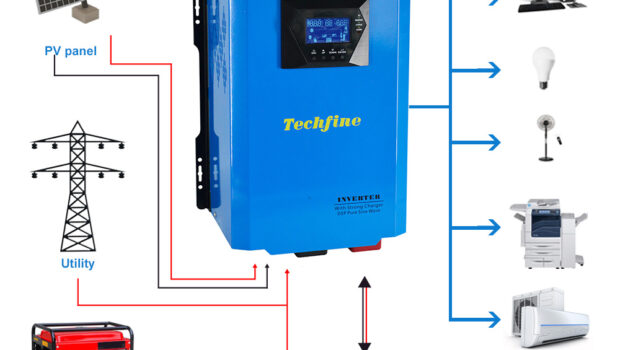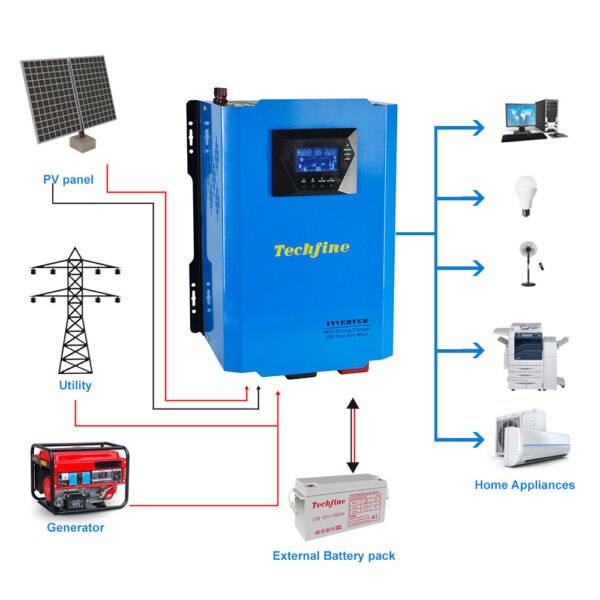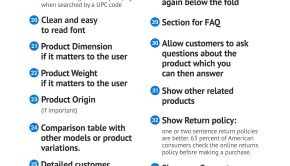Buying a Power Inverter in 2022: Details Nobody Told You About
Inverters can help you power up various devices when you don’t have AC power available. Power inverters convert direct current to alternating current necessary for different kitchen appliances, computers, power tools, and other devices.
Power inverters that convert DC to AC are very useful when you need portable power to use while camping, fishing, or spending time at your weekend cottage. Mobile LED Light tower are a great option that you can try. However, there are many things you need to consider before getting this device if you want it to work correctly.
In this short guide, we’ll share all the essentials you need to know to ensure you’re not making a mistake with your purchase.
Don’t confuse a generator with a power inverter.
Many people buy a generator instead of a power inverter because they think they’re the same. As soon as you start searching for an inverter, you will see generators as well. Both devices have the same function but different uses.
Generators create electrical power by converting mechanical energy. On the other hand, inverters need a power source to convert the energy into an AC supply. Powering up generators usually requires diesel, propane, or gasoline.
Inverters are designed for devices that don’t require a lot of power. They are typically best for devices under 1000W like computers, TVs, and chargers. If you plan to power refrigerators, heavy power tools, or stoves, you need a generator.
What size and power level do you need?
Inverters come in different sizes and power capacities. The power level of an inverter is described in watts (W), and how much you need depends on what kind of devices you need powering up. There’s no need to go overboard with power.
Many salespeople will recommend getting more powerful tools just to be “safe,” but they are just looking to sell more expensive units. Don’t fall for marketing and sales tricks because there’s no need to waste money on additional power you won’t use.
Check the wattage on the device before buying. Some inverters give you the option to plug in multiple devices. Learn the wattage of the devices you plan on using and add them up to see how much power you need in total.
Peak power
As you might know, power spikes can occasionally happen when using electrical devices. The peak power increases by around 50% for a split second when that happens. Although that peak lasts for a millisecond, it’s long enough to damage your devices.
That is why you should also look at the peak power capacity of the inverter. For instance, if you’re using a 500W device, the peak power should be at least 1000W.
Cheap isn’t good.
There are many different options available on the market, and you might come across incredibly cheap offers. Going cheap is rarely a good idea when shopping for electrical devices as they need extensive engineering, robust quality control, and robust inspection.
If you see units with impressive numbers, but their price doesn’t match the features, it’s probably all a sham.
Unreliable manufacturers will claim fantastic things, but they use partial testing methods that don’t give accurate results. When you turn on a device that is supposed to work with a specific poor-quality power inverter, the device is likely to fail.
Trusted manufacturers use quality components like custom toroidal transformers, circuits, inverter transformers, and capacitors that guarantee optimal performance. Quality components are more expensive, so the unit’s price is higher.
Consider voltage and output type.
The devices you plan on plugging into a power inverter need to have the correct voltage. If your inverter is 12V DC, you should use it for electrical units with the same voltage. Of course, some inverters out there can support multiple voltages (e.g., 24 V, 48 V, etc.).
You can also find inverters with voltage extensions to change your voltage to the desired input. Don’t confuse input voltage with an output voltage as output can be 120 or 240 VAC. Additionally, you can find power inverters with variable or selectable output voltage.
The wave output type is another detail to consider. Most devices will work well with modified sine wave output, and they are usually more affordable with reliable power output. A true sine wave inverter is the best option, especially for sensitive devices, but those inverters come at a higher price.
Conclusion
Buying a power inverter may seem confusing, but it’s all about the size, wattage, voltage, and output. The information above will help you find a suitable inverter for your needs in no time. Take the time to learn how to use an inverter properly to avoid any safety hazards and ensure long-term use. Good luck!















